St. Kitts/Nevis |
|
|
|
| Übersicht – Contents: | |
Diese Seite ist Teil des Projektes
St. Kitts/Nevis |
|
|
|
| Übersicht – Contents: | |
Flaggen – Flags: |
|
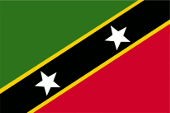 |
seit/since 1983, National- und Handelsflagge, national and merchant flag, Seitenverhältnis – ratio 2:3, Quelle/Source, nach/by: Flags of all Nations   |
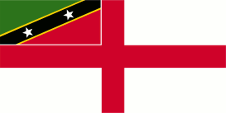 |
seit/since 1983, |
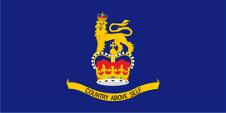 |
seit/since 1983, Flagge des Generalgouverneurs – flag of the Governor General, Seitenverhältnis – ratio 1:2, Quelle/Source, nach/by: Flags of the World |
Nevis: |
|
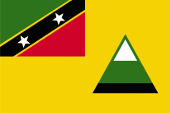 |
Flagge von Nevis – flag of Nevis, Seitenverhältnis – ratio = 2:3, Quelle/Source, nach/by: Flags of all Nations |
historische Flaggen – historical Flags: |
|
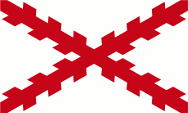 |
16./17. Jhd./cent., Die Inseln gehören zum spanischen Machtbereich – The islands belong to the Spanish sphere of influence, Quelle/Source, nach/by: Wikipedia (EN) |
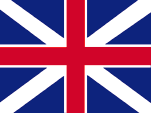 |
1620–1649, Flagge des Commonwealth von England, Schottland und Irland – flag of the Commonwealth of England, Scotland and Ireland, Quelle/Source, nach/by: Die Welt der Flaggen    |
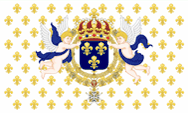 |
1625–1690, Flagge Frankreichs – flag of France, Quelle/Source, nach/by: Sodacan [CC BY-SA 3.0], via Wikimedia Commons  |
 |
1660–1707, Flagge des Commonwealth von England, Schottland und Irland – flag of the Commonwealth of England, Scotland and Ireland, Quelle/Source, nach/by: Die Welt der Flaggen    |
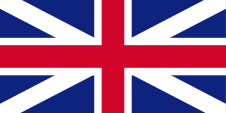 |
1707–1801, Flagge von Großbritannien – flag of United Kingdom, Quelle/Source, nach/by: Die Welt der Flaggen    |
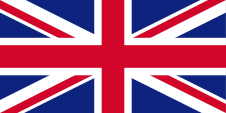 |
1801–1967, |
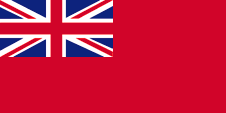 |
1864–1967, |
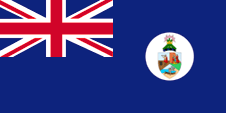 |
1958–1967, St. Kitts/Nevis & Anguilla, Flagge der Regierung (Staatsflagge) – flag of the government (state flag), Seitenverhältnis – ratio 1:2, Quelle/Source, nach/by: Flags of the World |
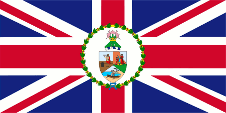 |
1958–1967, St. Kitts/Nevis & Anguilla, Flagge des Gouverneurs – flag of the Governor, Seitenverhältnis – ratio 1:2, Quelle/Source, nach/by: Flags of the World |
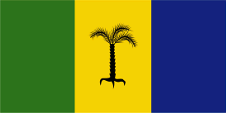 |
1967–1983, St. Kitts/Nevis & Anguilla, National- und Staatsflagge – national and state flag, Seitenverhältnis – ratio 1:2, Quelle/Source, nach/by: Flags of the World |
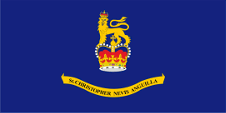 |
1967–1983, St. Kitts/Nevis & Anguilla, Flagge des Gouverneurs – flag of the Governor, Seitenverhältnis – ratio 1:2, Quelle/Source, nach/by: Flags of the World |
|
|
|
Leeward-Inseln – Leeward Islands (1833–1958): |
|
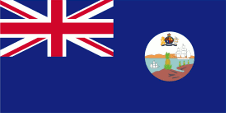 |
1871–1958, Flagge der Regierung (Staatsflagge) – flag of the government (state flag), Seitenverhältnis – ratio = 1:2, Quelle/Source, nach/by: Flags of the World |
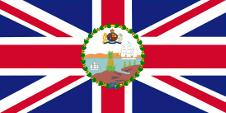 |
1874–1959, Flagge des Gouverneurs – flag of the Governor, Seitenverhältnis – ratio = 1:2, Quelle/Source, nach/by: Wikipedia (EN) |
|
|
|
Westindische Föderation – Federation of the West Indies (1958–1962): |
|
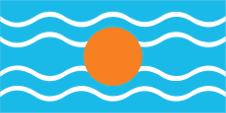 |
Flagge der Westindischen Föderation – flag of the Federation of the West Indies, Seitenverhältnis – ratio 1:2, Quelle/Source, nach/by: Flags of the World |
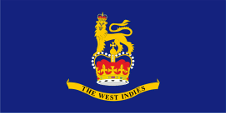 |
Flagge des Generalgouverneurs – flag of the Governor General, Seitenverhältnis – ratio 1:2, Quelle/Source, nach/by: Flags of the World |
|
Die heutige Flagge von
St. Kitts und Nevis wurde von Edrice Lewis entworfen und am 19.09.1983
anlässlich der Unabhängigkeit eingeführt. Sie zeigt einen diagonalen, gelb
gesäumten, schwarzen Streifen mit zwei weißen fünfzackigen Sternen, ein
grünes Feld links oben, und ein rotes Feld rechts unten. Das Schwarz steht
für die afrikanischen Wurzeln der meisten der Landesbewohner, Gelb für die
Sonne und Grün für die Fruchtbarkeit des Landes. Rot steht für das Blut, das
im Kampf zur Erlangung der Unabhängigkeit vergossen wurde. Die weißen Sterne
symbolisieren die beiden Inseln. Sie drücken außerdem die Hoffnung auf
Freiheit und Frieden aus. Da das Land dem britischen Ensign- und
Farbensystem folgt, werden die Farben der Flagge dem Spektrum entsprechen,
welches das britische Verteidigungsministerium in seiner Publikation "Flags
of all Nations" (eine Dienstvorschrift) für folgende Farben angibt: Grün =
pt 364 c, Rot = pt 186 c, Tiefgelb = pt 116 c. St. Kitts und Nevis
orientiert sich bis heute am britischen Ensign-System. Das weist auf die
Verbindungen zu Großbritannien hin, denn die Marineflagge ist ein White
Ensign, eine weiße Flagge mit durchgehendem roten Georgskreuz und mit der
Landesflagge in der Oberecke. Anfänglich waren die Inseln, insbesondere St. Kitts (St. Christopher), zwischen Frankreich und England/Großbritannien umstritten. Im Vertrag von Utrecht, im Jahre 1713, bekam Großbritannien St. Kitts offiziell zugesprochen, so dass ab jenem Jahr die Flagge von Großbritannien unangefochten über den Inseln wehte. Ab diesem Zeitpunkt repräsentierten der einzelne Bürger und auch die Behörden ihren Status als Bürger oder Organe der britischen Nation, verkörpert im United Kingdom, durch die Verwendung des Union Jack, dann „Union Flag“ genannt. Zur See war für den britischen Bürger ab 1864 die britische Handelsflagge, der Red Ensign (Rote Flagge) vorgesehen. In einigen wenigen Fällen wurde den Bürgern einer Kolonie durch die Admiralität erlaubt, auf See einen eigenen Red Ensign mit dem Badge der Kolonie zu verwenden. Der Union Jack in der Oberecke dieser Flaggen wies auf die Verbindungen zu Großbritannien hin. Großbritannien hatte in Jahr 1864 ein Flaggensystem eingeführt, in dem: • Kriegsschiffe einen sogenannten "White Ensign" (Marineflagge), eine weiße Flagge oft mit durchgehendem roten Georgskreuz und mit dem Union Jack in der Oberecke, • Handelsschiffe einen "Red Ensign" (auch "Civil Ensign" → Bürgerflagge genannt, die eigentl. Handelsflagge), eine rote Flagge mit dem Union Jack in der Oberecke, und • Dienstschiffe einen "Blue Ensign" (Regierungsflagge → die eigentl. Staatsflagge), eine blaue Flagge mit dem Union Jack in der Oberecke führten. Seit 1865 durften Schiffe von Kolonialregierungen einen Blue Ensign mit einem Badge (Abzeichen) im fliegenden Ende führen. Die jeweiligen Regierungen sollten entsprechende Bagdes zur Verfügung stellen. Handelsschiffe und seefahrende Privatpersonen aus Kolonien dürfen nur dann einen Red Ensign mit Badge führen, wenn von der britischen Admiralität eine entsprechende Erlaubnis für die Kolonie erteilt wurde. Ein solches Badge war oft eine auf einer Scheibe platzierte regionale landschaftliche Darstellung, zeigte oft Schiffe, historische Begebenheiten oder konnte auch nur eine Art Logo sein. Sehr oft zeigte ein Badge zusätzlich den Namen des Landes oder auch einen Wahlspruch. Einige Besitzungen hatten aber auch schon von Anfang an ein Wappen, bzw. erhielten über die Jahre eine eigenes Wappen und das Badge wurde abgeschafft. Um ein weitgehend einheitliches Erscheinungsbild im fliegenden Ende der Flaggen zu gewährleisten, wurden Wappen und auch andere Symbole auf einer weißen Scheibe in der Größe der früheren Badges dargestellt. Es gab hier aber auch Ausnahmen, denn einige Kolonien verwendeten diese weiße Scheibe nicht, und platzierten ihr Wappen oder auch nur das Wappenschild - manchmal auch vergrößert - direkt auf das Flaggentuch. Schon in den 40-er Jahre wurde dazu übergegangen die weiße Scheibe zu entfernen und das Wappen direkt zu platzieren oder vergrößert dazustellen. Dieser Umstellungsprozess erfolgte allmählich, nirgendwo gleichzeitig und vollständig. In einigen britischen Besitzungen sind bis heute Flaggen mit der weißen Scheibe in Gebrauch, in anderen nicht mehr und in einigen Gebieten gibt es beide Varianten nebeneinander. Das Gebiet war – ab 1882 zusammen mit Anguilla – von 1833 bis 1958 Teil der Britischen Kolonie der Leeward-Inseln, eine föderale Kolonie, die aus einzelnen Teilgebieten, Teilkolonien oder Inseln, bestand. Diese einzelnen Kolonien hatten ihre eigenen Flaggen, auch "Blue Ensigns" mit einem eigenen Badge für die Verwendung durch die Regierungen dieser Kolonien. Die übergeordnete politische Einheit der britischen Leeward-Inseln hatte zusätzlich einen eigenen Blue Ensign mit einem eigenen Leeward-Inseln-Badge. Dieses Badge wurde im Jahre 1871 geschaffen und zeigte eine Ananas an einer Küste mit zwei Schiffen. Der Gouverneur nutzte es ebenfalls auf seiner Flagge. Er wurde vor Ort, in dem zugehörigen Teilgebiet, Teilkolonie oder Insel, durch einen Administrator vertreten. Die föderale Kolonie endete in Ihrem Bestand mit der Aufnahme in die Westindische Föderation, geführt von einem Generalgouverneur. Vor Ort, in dem zugehörigen Teilgebiet, Teilkolonie oder Insel, behielt der oberste Vertreter der Krone seinen Rang. Er blieb Administrator oder Gouverneur. Die lokalen Flaggen (z.B. blaue oder rote Ensigns, also eigene Staats- oder Handelsflaggen) wurden dabei beibehalten. St. Christopher (St. Kitts), Nevis und Anguilla waren bereits 1882 innerhalb der Kolonie der Leeward-Inseln verwaltungstechnisch zu einer Kolonie vereinigt worden: Kolonie St. Christopher (St. Kitts), Nevis und Anguilla. Wahrscheinlich waren auf den einzelnen Inseln bereits eigene Siegel in Verwendung deren Bilder 1958 auf einem Wappenschild zusammengefasst wurden, als die Kolonie der Leeward-Inseln aufgelöst würde und die Kolonie St. Christopher (St. Kitts), Nevis und Anguilla eigene Hoheitszeichen verwenden durfte. Dieses Wappenschild wurde auf einer weißen Scheibe zum Badge der Kolonie, das auf einem "Blue Ensign" verwendet wurde. Das Wappenschild war dreigeteilt und zeigte die Wappenbilder der einzelnen Inseln: Kolumbus mit einem Fernrohr an Bord eines Schiffs (St. Kitts), drei Jungfrauen an einer Quelle (Nevis) und einen Eingeborenen mit seinem Boot an einer Küste (Anguilla). Das Gebiet war – zusammen mit Anguilla – von 1958 bis 1962 Teil der Britischen Kolonie "Westindische Föderation". Dieses politische Projekt war ein Versuch die Verwaltung zusammenzufassen und einen Staat nach dem Vorbild Kanadas zu schaffen, aber auch um den Unabhängigkeitsbestrebungen der zugehörigen Inseln und Kolonien entgegenzuwirken. Jedoch kam es zu Eifersüchteleien zwischen großen und kleinen Inseln, bis hin zum offenen Streit. Die Flagge der "Westindische Föderation" war ein hellblaues Flaggentuch mit vier waagerechten weißen Wellenlinien und einer goldenen Scheibe in der Mitte. Sie symbolisierte die Sonne über der Karibischen See. Über den Farbton des Blau ist man sich im Zweifel, es wird oft das übliche Britische Heraldikblau angenommen. Eine Zeitgenössische Beschreibung nennt jedoch ein "kaiserliches Blau" was Hellblau wäre und auch viele zeitgenössische Drucke zeigen dieses helle Blau. Am 27.02.1967 wurde durch Großbritannien innere Selbstverwaltung gewährt, und St. Kitts, Nevis und Anguilla wurden ein autonomer, mit Großbritannien assoziierter Staat. In diesem Zusammenhang wurde eine neue Flagge eingeführt. Diese Flagge zeigte drei senkrechte Streifen in Grün, Gelb und Blau, und in der Mitte des gelben Streifens eine schwarze Palme mit drei Zweigen (St.Kitts, Nevis und Anguilla). Flaggen mit gleichen Farben wurden und werden auch in Grenada und in St. Vincent benutzt. Zur Unabhängigkeit am 19.09.1983 wurde dann die heutige Flagge eingeführt. In Anguilla lebte sofort der Gedanke der Sezession auf, der konsequent umgesetzt wurde und Anguilla trennte sich noch 1967 von St. Kitts und Nevis. Erst 1980 endete die ohnehin nur noch de jure bestehende Verbindung mit St. Kitts und Nevis offiziell. Die Flagge von Nevis ist einfarbig gelb und zeigt die Flagge von St. Kitts/Nevis im Obereck und im wehenden die Kontur des Vulkans Nevis Peak, der die Insel dominiert. Es gibt auch eine Variante der Flagge, die am Fuß des Vulkans einen blauen Streifen zeigt. |
The current flag of St.
Kitts and Nevis was designed by Edrice Lewis and was introduced on 19th of
September in 1983 on the occasion of independence. It shows a diagonal,
yellow-fringed, black stripe with two white five-pointed stars, a green
field at the top left and a red field at the bottom right. The black stands
for the African roots of most of the country's inhabitants, yellow for the
sun and green for the country's fertility. Red symbolises the blood that was
shed in the struggle for independence. The white stars symbolise the two
islands. They also symbolise the hope for freedom and peace. As the country follows the British ensign and colour system, the colours of the flag will correspond to the spectrum specified by the British Ministry of Defence in its publication "Flags of all Nations" (a service regulation) for the following colours: Green = pt 364 c, Red = pt 186 c, Deep yellow = pt 116 c. St. Kitts and Nevis follows the British Ensign system to this day. This points to the links with United Kingdom, as the naval flag is a White Ensign, a white flag with a continuous red St George's Cross and with the national flag in the upper corner. Initially, the islands, especially St. Kitts (St. Christopher), were disputed between France and England/United Kingdom. In the Treaty of Utrecht in 1713, United Kingdom was officially granted St. Kitts, so that from that year onwards the flag of the United Kingdom flew unchallenged over the islands. From this point onwards, individuals, citizens and also the authorities represented their status as citizens or organs of the British nation, embodied in the United Kingdom, through the use of the Union Jack, then called the "Union Flag". At sea, the British merchant flag, the Red Ensign, was intended for British citizens from 1864. In a few cases, the citizens of a colony were authorised by the Admiralty to use their own Red Ensign with the colony's badge at sea. The Union Jack in the top corner of these flags signalled the connections to United Kingdom. United Kingdom introduced a flag system in 1864 in which: • war ships fly the "White Ensign" (naval flag), a white flag often with an uninterrupted red St. George's-Cross and with the Union Jack in the upper staff quadrant of the flag, • merchant ships fly a "Red Ensign" (also named "Civil Ensign" → civil flag, the real merchant flag), a red flag with the Union Jack in the upper staff quadrant of the flag, and • governmental ships fly the "Blue Ensign" (flag for the use by the gouvernment → the actual state flag), a blue flag with the Union Jack in the upper staff quadrant of the flag. From 1865, the ships of the colonial governments were allowed to use a Blue Ensign with a badge at the flying end. The respective governments were to provide appropriate badges. Merchant ships and seafaring privateers from colonies were only allowed to use a Red Ensign with a badge if the British Admiralty had issued a corresponding licence for that colony. Such a badge was often a regional landscape depiction on a disc, often showed ships, historical events or could simply be a kind of logo. Very often a badge also contained the name of the country or a motto. However, some possessions had a coat of arms from the beginning or were given their own coat of arms over the years and the badge was abolished. To ensure a largely uniform appearance in the flying end of the flags, coats of arms and other symbols were displayed on a white disc in the size of the former badges. However, there were also exceptions, as some colonies dispensed with this white disc and placed their coat of arms or even just the shield – sometimes enlarged – directly on the bunting. As early as the 1940s, the white disc was removed and the coat of arms was applied directly or enlarged. This conversion process took place gradually, nowhere simultaneously and completely. In some British possessions flags with the white disc are still in use today, in others no longer and in some areas both variants exist side by side. From 1832 to 1958, the area was – from 1882 together with Anguilla – part of the British colony of the Leeward Islands, a federal colony consisting of individual sub-areas, sub-colonies or islands. These individual colonies had their own flags, also called "Blue Ensigns" with their own badge, for use by the governments of these colonies. The overarching political entity of the British Leeward Islands also had its own Blue Ensign with its own Leeward Islands badge. This badge was created in 1871 and showed a pineapple on a coastline with two ships. The governor also used it on his flag. He was represented locally, in the associated sub-territory, sub-colony or island, by an administrator. The federal colony ceased to exist when it was incorporated into the Federation of the West Indies, led by a Governor-General. Locally, in the associated sub-territory, sub-colony or island, the highest representative of the Crown retained his rank. He remained an administrator or even governor. The local flags (e.g. blue or red ensigns, i.e. separate state or merchant flags) have been retained. St. Christopher (St. Kitts), Nevis and Anguilla had already been administratively united into one colony within the colony of the Leeward Islands in 1882: Colony of St. Christopher (St. Kitts), Nevis and Anguilla. The individual islands probably already had their own seals in use, the images of which were combined on one escutcheon in 1958 when the colony of the Leeward Islands was dissolved and the colony of St. Christopher (St. Kitts), Nevis and Anguilla was allowed to use its own state emblems. This escutcheon became the colony's badge on a white disc, which was used on a "Blue Ensign". The shield was divided into three parts and showed the heraldic images of the individual islands: Columbus with a telescope on board of a ship (St. Kitts), three virgins at a spring (Nevis) and a native with his boat on a coast (Anguilla). From 1958 to 1962 the territory was also – together with Anguilla – part of the British colony "Federation of the West Indies". This political project was an attempt to unify the administration and to create a state modelled on Canada, but also to counteract the independence efforts of the associated islands and colonies. However, jealousies arose between the large and small islands and even led to open dispute. The flag of the "Federation of the West Indies" was a light blue flag with four horizontal white wavy lines and a golden disc in the middle. It symbolized the sun over the Caribbean Sea. There is some doubt about the color of the blue; it is often assumed to be the usual British heraldry blue. However, a contemporary description calls it an "imperial blue" which would be light blue and many contemporary prints also show this light blue. On 27th of February in 1967, internal self-government was granted by United Kingdom, and St. Kitts, Nevis and Anguilla became an autonomous state associated with United Kingdom. In this context, a new flag was introduced. This flag showed three vertical stripes in green, yellow and blue, and in the centre of the yellow stripe a black palm tree with three branches (St. Kitts, Nevis and Anguilla). Flags with the same colours were and are also used in Grenada and in St. Vincent. The current flag was introduced at independence on 19th of September in 1983. The idea of secession immediately came to life in Anguilla, which was consistently implemented and Anguilla separated from St. Kitts and Nevis in 1967. It was not until 1980 that the already only de jure connection with St. Kitts and Nevis officially ended. The flag of Nevis is plain yellow flag and shows the flag of St. Kitts/Nevis in the upper corner and the outline of the volcano Nevis Peak, which dominates the island, in the waving part. There is also a variant of the flag that shows a blue stripe at the foot of the volcano. |
| Quelle/Source: Die Welt der Flaggen, Flaggen Wappen Hymnen, Flags of all Nations, Flags of the World, Wikipedia (EN), Volker Preuß | |
Wappen – Coat of Arms: |
|
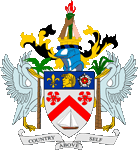 |
seit/since 1967, Wappen von Saint Kitts/Nevis – coat of arms of Saint Kitts/Nevis, Quelle/Source: Corel Draw 4 |
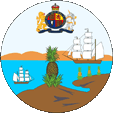 |
1871–1958, Leeward-Inseln – Leeward Islands, Badge (Abzeichen) – Badge, Quelle/Source, nach/by: Flags of the World |
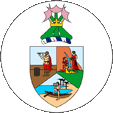 |
1958–1967, Saint Christopher, Nevis and Anguilla, Badge (Abzeichen) – Badge, Quelle/Source, nach/by: Flags of the World |
|
Das Staatswappen von St.
Kitts und Nevis wurde am 16.02.1967 eingeführt. Das Schild zeigt in einem
blauen Schildhaupt eine Lilie, den Kopf einer Karibin und eine Tudor-Rose.
Damit wird die Geschichte der Inseln verkörpert, die in der Vergangenheit
zwischen Großbritannien und Frankreich umstritten waren. Im mittleren Teil
des Schildes, auf silbernem Grund, zwei rote Poinciana-Blüten, ein
Segelschiff und dazwischen ein roter Winkel (Sparren). Schildhalter sind
zwei Pelikane. Oberhalb des Schildes ein Helm mit gold-schwarzen Decken,
eine schwarz-blaue Wulst sowie eine Fackel, die von drei verschiedenfarbigen
Menschenarmen gehalten wird – Symbol der drei Rassen auf den Inseln. Das
Motto in dem silbernen Spruchband lautete ursprünglich "Unity and Trinity" →
"Einheit und Dreifaltigkeit". Dieses wurde zur Unabhängigkeit in "Country
above self" → "Das Land über das Selbst" geändert, ebenso wie das Schiff,
das seit 1983 anstelle von zwei Masten nur noch einen Mast hat. Das Badge (Abzeichen) der Leeward-Inseln, zu denen St. Christopher (St. Kitts), Nevis und Anguilla zwischen 1871 und 1958 gehörten, zeigte eine Ananas an einer Küste mit zwei Schiffen. St. Christopher (St. Kitts), Nevis und Anguilla waren bereits 1882 innerhalb der Kolonie der Leeward-Inseln verwaltungstechnisch zu einer Kolonie vereinigt worden: Kolonie St. Christopher (St. Kitts), Nevis und Anguilla. Wahrscheinlich waren auf den einzelnen Inseln bereits eigene Siegel in Verwendung deren Bilder 1958 auf einem Wappenschild zusammengefasst wurden, als die Kolonie der Leeward-Inseln aufgelöst würde und die Kolonie St. Christopher (St. Kitts), Nevis und Anguilla eigene Hoheitszeichen verwenden durfte. Dieses Wappenschild wurde auf einer weißen Scheibe zum Badge der Kolonie, das auf einem "Blue Ensign" verwendet wurde. Das Wappenschild war dreigeteilt und zeigte die Wappenbilder der einzelnen Inseln: Kolumbus mit einem Fernrohr an Bord eines Schiffs (St. Kitts), drei Jungfrauen an einer Quelle (Nevis) und einen Eingeborenen mit seinem Boot an einer Küste (Anguilla). |
The coat of arms of Saint
Kitts and Nevis was introduced on 16th of February in 1967. The shield shows
in a blue upper part a lily, the head of a Carib woman and a Tudor rose.
This embodies the history of the islands, which have been disputed between Britain and France in the past. In the middle part of the shield, on a silvery background, are two red poinciana flowers, a sailing ship and a red angle (chevron) between them. Supporters are two pelicans. Above the shield is a helmet with golden-black mantling, a black-blue torse and a torch held by three different colored human arms – a symbol of the three races on the islands. The motto in the silvery banner was originally "Unity and Trinity". This was changed to "Country above self" on the occasion of independence, as was the ship, which since 1983 has only one mast instead of two. The badge of the Leeward Islands, which included Saint Christopher (Saint Kitts), Nevis and Anguilla between 1871 and 1958, showed a pineapple on a coast with two ships. Saint Christopher (Saint Kitts), Nevis and Anguilla had already been administratively united into one colony within the colony of the Leeward Islands in 1882: Colony of Saint Christopher (Saint Kitts), Nevis and Anguilla. The individual islands were probably already using their own seals, the images of which were combined on a heraldic shield in 1958 when the colony of the Leeward Islands was dissolved and the colony of Saint Christopher (Saint Kitts), Nevis and Anguilla were allowed to use their own official emblems. This heraldic shield became the colony's badge on a white disc, used on a "Blue Ensign". The escutcheon was divided into three parts and showed the heraldic images of the individual islands: Columbus with a telescope on board of a ship (Saint Kitts), three virgins at a spring (Nevis) and a native with his boat on a coast (Anguilla). |
| Quelle/Source: Die Welt der Flaggen, Flaggen Wappen Hymnen, Flags of the World, Wikipedia (EN), Volker Preuß | |
Landkarte – Map: |
Lage – Position: |
Landkarte des Landes – Map of the Country: |
|
|
| Zahlen und Fakten – Numbers and Facts: | |
|
|
|
|
|
|
|
|
|
|
|
|
|
|
|
|
|
|
|
|
|
|
|
1493
· der spanische Seefahrer Christoph Kolumbus entdeckt die Inseln und nennt
sie San Cristóbal (St. Christopherus, heutzutage verkürzt auf "St. Kitts")
und Santa María de las Nieves, die Inseln wurden Spanischer Besitz, jedoch
nicht kolonisiert 1620 · Inbesitznahme von Nevis durch England 1623 · Besiedlung von St. Kitts durch Engländer 1625 · Besiedlung von St. Kitts durch Franzosen 1627–1666 · St. Kitts ist zwischen England und Frankreich geteilt 1628 · Besiedlung von Nevis durch Engländer aus St. Kitts 1666–1671 · St. Kitts ist französischer Besitz 1671–1689 · St. Kitts ist zwischen England und Frankreich geteilt, der britische Besitz wird der Kolonie Leeward-Inseln angeschlossen 1689–1690 · St. Kitts ist französischer Besitz 1690 · St. Kitts wird britischer Besitz und wird wieder der Kolonie Leeward-Inseln angeschlossen 1706 · vorübergehende französische Besetzung 1713 · Vertrag von Utrecht, Großbritannien erhält St. Kitts offiziell zugesprochen 1782–1783 · vorübergehende französische Besetzung 1816 · die Kolonie Leeward-Inseln wird aufgelöst, St. Kitts wird mit Anguilla, Nevis und den Jungferninseln zusammengefasst 1833 · Neugründung der Kolonie Leeward-Inseln, bis 1958 Teil der Britischen Kolonie der Leeward-Inseln 1882 · die britischen Besitzungen St. Kitts, Nevis und Anguilla werden innerhalb der Kolonie Leeward-Inseln verwaltungstechnisch vereinigt (Kolonie St. Kitts, Nevis und Anguilla) 1958–1962 · Teil der Britischen Kolonie "Westindische Föderation" 27.02.1967 · Großbritannien gewährt innere Selbstverwaltung (Autonomie als mit Großbritannien assoziierter Staat) 1969 · Forderungen nach Unabhängigkeit auf Anguilla 1971 · Anguilla wird wieder der britischen Verwaltung unterstellt 1980 · Anguilla wird von St. Kitts/Nevis getrennt und eine eigenständige Kolonie 19.09.1983 · Großbritannien gewährt die Unabhängigkeit im Rahmen des Commonwealth of Nations, Nevis erhält jedoch eine eingeschränkte Selbstverwaltung 13.10.1997 · das Parlament von Nevis proklamiert die Unabhängigkeit der Insel, wird nicht anerkannt 10.08.1998 · eine Volksabstimmung auf Nevis für staatliche Unabhängigkeit scheitert |
|
1493
· the Spanish seafarer Christoph Columbus discovers the islands and names
them San Cristóbal (St. Christopherus, today shortend to "Saint Kitts") and
Santa María de las Nieves, the islands become a Spanish possession but were
not colonized 1620 · appropriation of Nevis by England 1623 · settlement of Saint Kitts by Englishmen 1625 · settlement of Saint Kitts by Frenchmen 1627–1666 · Saint Kitts is divided between England and France 1628 · settlement of Nevis by Englishmen from Saint Kitts 1666–1671 · Saint Kitts is French possession 1671–1689 · Saint Kitts is divided between England and France, the British possession becomes affiliated to the Leeward Islands Colony 1689–1690 · Saint Kitts is French possession 1690 · Saint Kitts becomes British possession and affiliated to the Leeward Islands Colony again 1706 · transitional French occupation 1713 · Treaty of Utrecht, United Kingdom earns Saint Kitts officially 1782–1783 · transitional French occupation 1816 · the Leeward Islands Colony becomes dissolved, Saint Kitts becomes fused with Anguilla, Nevis and the Virgin Islands 1833 · re-estbalishment of the Leeward Islands Colony, to 1958 part of the British Leeward Islands Colony 1882 · the British possessions of Saint Kitts, Nevis and Anguilla become fused within the Leeward Islands Colony (Colony of Saint Kitts, Nevis and Anguilla) 1958–1962 · part of the British colony "Federation of the West Indies" 27th of February 1967 · United Kingdom grants interior self administration (autonomy as with United Kingdom associated state) 1969 · demands for independence on Anguilla 1971 · Anguilla becomes subordinated under the British administration again 1980 · Anguilla becomes separated from Saint Kitts/Nevis and becomes a self-contained colony 19th of September 1983 · United Kingdom grants independence within the framework of the Commonwealth of Nations, but Nevis gets a limited self administration 13th of October 1997 · the parliament of Nevis proclaims the independence of the island, not recognized 10th of August 1998 · a plebiscite on Nevis for independence fails |
| Quelle/Source: Atlas zur Geschichte, World Statesmen, Wikipedia (EN) |
| Als Kolumbus im Jahre 1493 die heutige Insel St. Kitts entdeckte, nannte er sie San Cristóbal (nach anderen Quellen Isla de San Jorge). Der Name St. Christopher wird in der heutigen Zeit nur noch verkürzt wiedergegeben: "St. Kitts". | As columbus in 1493 discovered the today’s island of Saint Kitts, he named it San Cristóbal (by other sources Isla de San Jorge). The name Saint Christopher is todays only shortend in use: "Saint Kitts". |
| Als Kolumbus im Jahre 1493 die heutige Insel Nevis entdeckte, nannte er sie Santa María de las Nieves (Heilige Maria vom Schnee), weil er die Wolken am Vulkan Nevis Peak für Schnee gehalten hat. Aus "Nieves" wurde im laufe der Jahre schließlich "Nevis". | As Columbus in 1493 discovered the today’s island of Nevis, he named it Santa María de las Nieves (Saint Maria of Snow), because he thought that the clouds on the volcano Nevis Peak are snow. Through the times became "Nieves" finally to "Nevis". |
| Die Kalinago, die voreuropäischen Bewohner von St. Kitts, nannten die Insel "Liamuiga", was so viel wie "fruchtbares Land" bedeutet. | The Kalinago, the pre-European inhabitants of Saint Kitts, called the island "Liamuiga", which means "fertile land." |
| Quelle/Source: Wikipedia (EN) | |